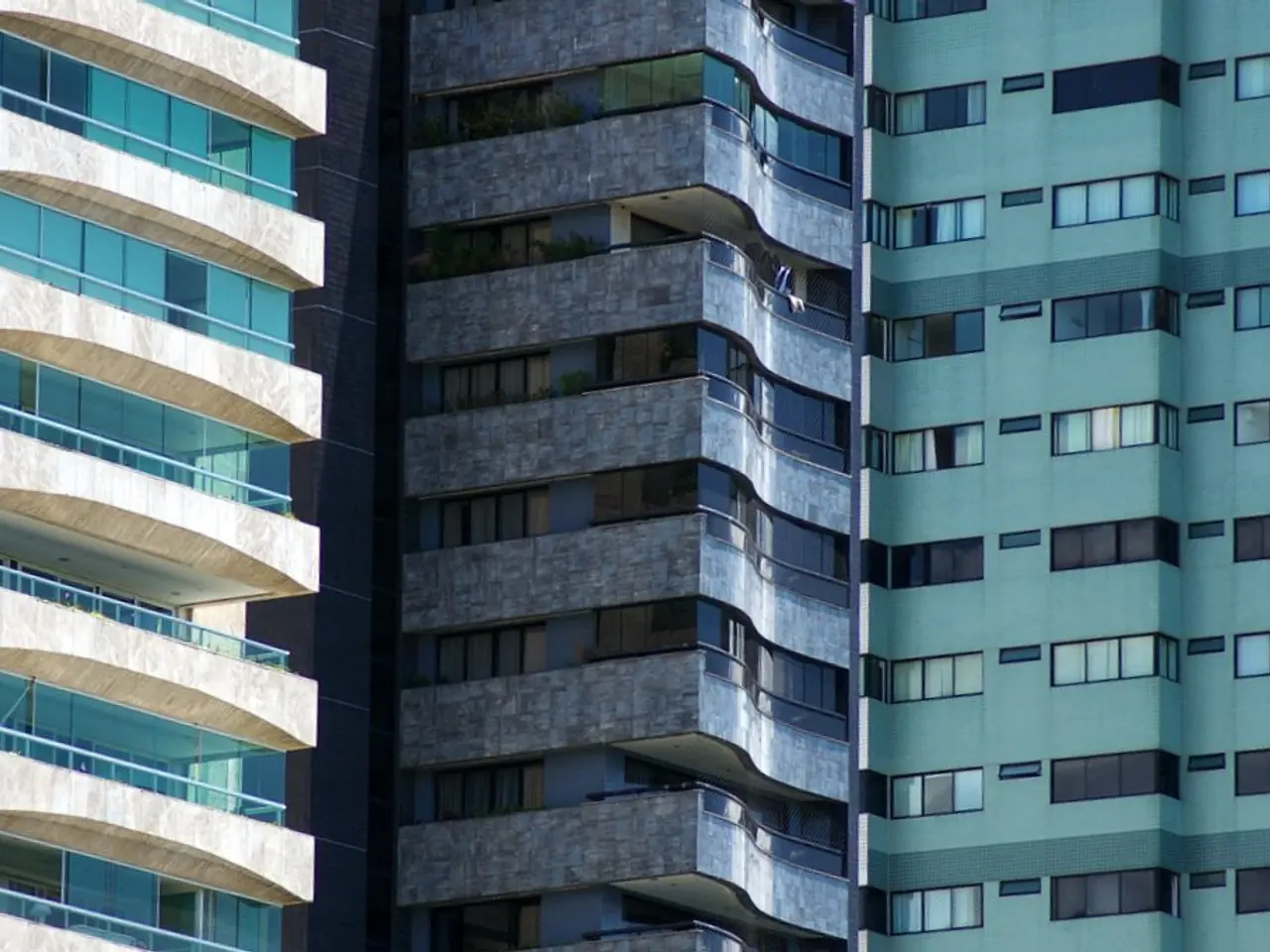Optimal brickwork techniques for historic or modern structures: a comparison
In the world of brickwork restoration, Marcus Clark, a third-generation bricklayer and director of Heritage Brickwork Restoration, is an authority on mortar formulation for historic properties. His expertise is invaluable when it comes to preserving the architectural integrity of these buildings.
Pointing, the process of creating the mortar joints between bricks, is a crucial aspect of brickwork restoration. There are several styles of pointing, each with its unique characteristics and purposes.
Weathered pointing, a process that involves using a pointing trowel to angle the mortar joint so it slopes forward, was widely used in Victorian structures. This style, often followed by a 'striking' motion with the trowel for a more defined finish (known as weather-struck pointing), is prized for its elegant finish and protectiveness against severe weather.
Flush pointing, currently one of the most popular styles, is commonly used in new builds where efficient work and a contemporary look are desired. In contrast, recessed pointing, also known as 'raked pointing', is used to highlight the form and textures of bricks.
V-joint pointing, also known as 'double struck' or 'bird's beak', is a traditional style seen mostly in historic buildings. This style, which has a v-shaped profile, coming to its highest point along the centre of the joint, was created to halve the joint size in very old buildings, such as Tudor structures, where brick-making technology was in its infancy.
Concave pointing, a simple style commonly used on new builds, resembles a bucket handle finish. While it's easy and cost-effective, it's not considered a fine finish. Tuck pointing, on the other hand, involves applying two different colours of mortar, with a thinner but more prominent layer adding a contrast colour within scribed lines at the front of the joint.
When old mortar is partially removed and replaced, this is called repointing. When repointing a historic property, key factors to consider include ensuring compatibility with the original mortar in terms of composition, color, texture, and hardness to preserve both the structure and appearance. The new mortar must also allow the masonry to breathe and accommodate movement to prevent cracking and damage over time.
Matching the mortar type (lime-based versus cement-based), as historic properties typically require softer lime mortar rather than hard cement to avoid damaging softer historic bricks or stones, is another important consideration. The color of the mortar should blend or match the original mortar to maintain visual authenticity, especially for exposed brickwork or stone.
The joint profile and the pointing technique should replicate the original historic style to keep the architectural integrity. The compatibility of the new mortar with the substrate to ensure good bonding and longevity without causing stress or spalling is also crucial.
Environmental exposure factors such as weather and moisture conditions influence mortar selection and application methods to maximize durability and protection. Lastly, the expertise of the contractors experienced in historic masonry restoration is essential, as improper repointing can cause irreversible damage.
In summary, selecting the pointing style for repointing a historic property involves balancing structural needs, material compatibility, aesthetic match, and preservation ethics to both protect and respect the historic fabric of the building.
- For new home builds desiring a contemporary look, flush pointing is commonly employed, contrasting with the more traditional V-joint pointing often seen in historic buildings.
- In the realm of home-and-garden projects, understanding the costs associated with various pointing styles and their suitability for specific property types is crucial to ensure the longevity and appeal of the structure.
- When it comes to repointing a historic property, lifestyle factors such as preserving the architectural integrity of the building and maintaining visual authenticity must be carefully considered alongside the technical aspects of matching the mortar type and ensuring compatibility with the original material.
- In the world of home-and-garden improvements, employing the right tools, such as pointing trowels and mortar of appropriate composition, texture, and color, plays a significant role in both the structural integrity and the aesthetic appeal of the project.




